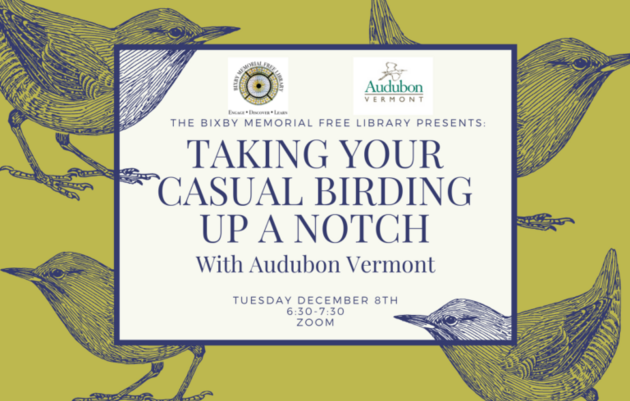This is the first of a series of posts that will encourage students to learn about different bird adaptations, winter survival, and identification. With fewer birds and foliage, winter is a great time to start learning our year-round birds so that you're ready to build your knowledge once the migrants arrive in spring! Not to mention, most of the birds that winter in Vermont are charismatic and exciting to spot outside.
How are woodpeckers able to drill through wood? Woodpeckers have what are called chisel beaks, allowing them to excavate live or dead wood in search of food or to create a nesting cavity. Cells in the tip of the beak are constantly being replaced, preventing them from being worn down.
Does it hurt their head to pound? A woodpecker may chisel away at wood up to 10,000 times in a single day, each strike at least 1,000 times the force of gravity. How do they not get a headache or suffer serious damage to their brain? There are likely a number of adaptations involved. One is the hyoid bone, a looping structure around the entire skull that may serve as a “safety belt”. Another adaptation is that the upper and lower halves of the bird’s beak are uneven, and as force is transmitted from the tip of the beak into the hyoid bone, the unevenness lowers the force transmitted to the brain. Finally, there are a number of sponge-like structures at various points in the skull that help to distribute the impact forces.
Do they get wood in their eyes? The wood chips do fly when a woodpecker is chiseling away. To protect their eyes from the debris, the birds have a translucent third eyelid, called a nictitating membrane, which can be drawn across the eye while maintaining visibility. Likewise, they have bristle-like feathers over the nostrils to prevent unwanted inhalation of wood particles. OSHA would approve.
How do they move up and down a tree trunk? Most woodpeckers have two toes facing forward and two backward. Scientists call this a zygodactyl (zy-go-dack-tal) arrangement. This allows the birds to easily cling to and climb the trunks of trees. The backward-facing toes can even rotate sideways to get more of a grip.
Where can I find woodpeckers? Any hardwood or mixed forest, snags (standing dead trees), suet feeders, and black sunflower seed feeders. I even have downy, hairy and pileated woodpeckers outside my window in downtown Burlington.
Putting up a suet feeder in outside your window or out in the yard is the perfect way to attract woodpeckers and see them up close. This way, you can study their size, beaks, plumage and calls. Suet is sold at most garden or hardware stores, but you can also make your own! Recipe to make suet.
Common Backyard Woodpeckers in Winter
Pileated Woodpecker
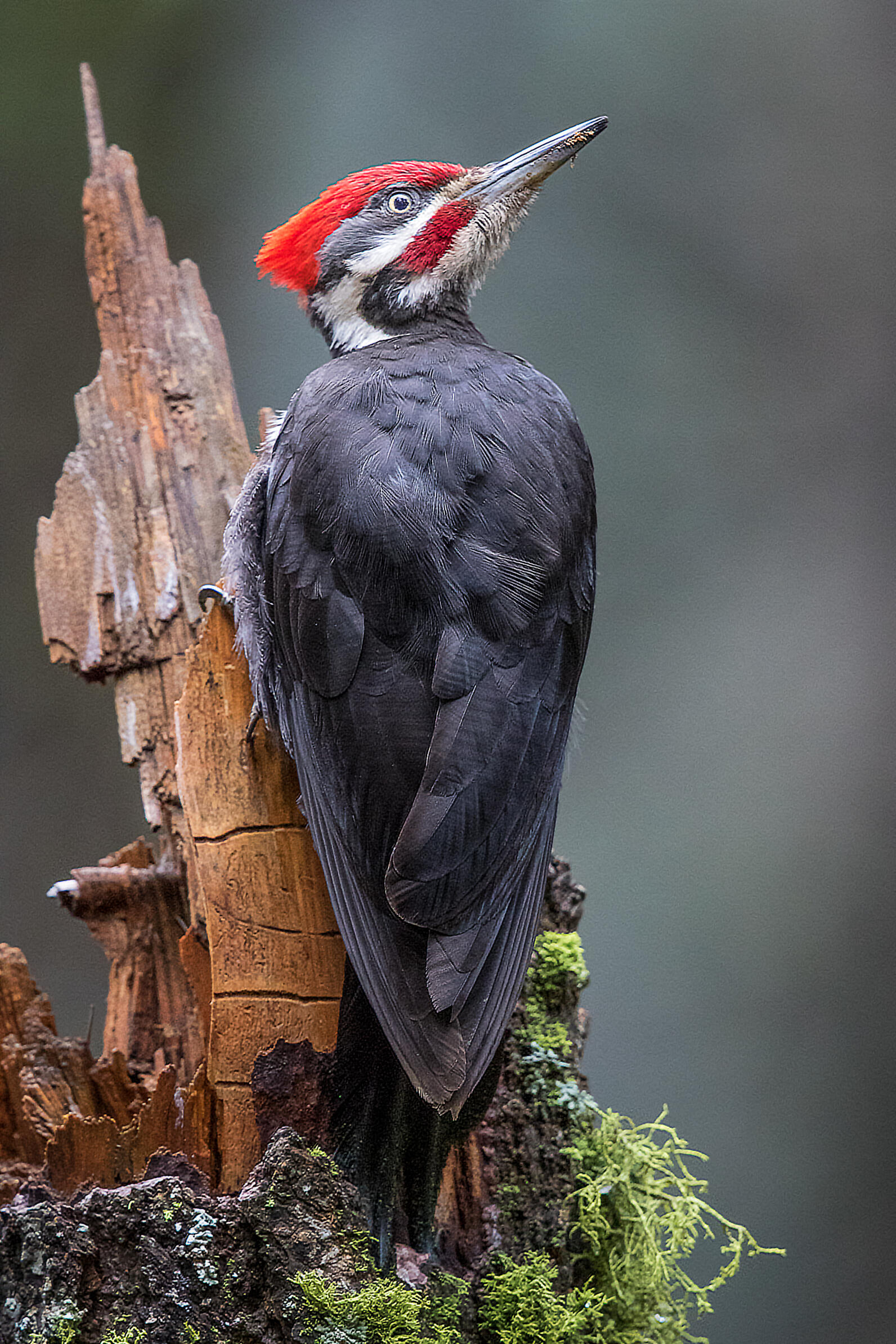
Pileated woodpeckers are the largest in the state (and North America), about the size of a crow. They have long necks and triangular, flaming red crests that sweep off the back of the head. Their bills are long as their heads! Pileated woodpeckers make large, oblong cavities in trees. Click the photo of a pileated on the left on the screen to hear its maniacal laugh-like call.
Downy Woodpecker
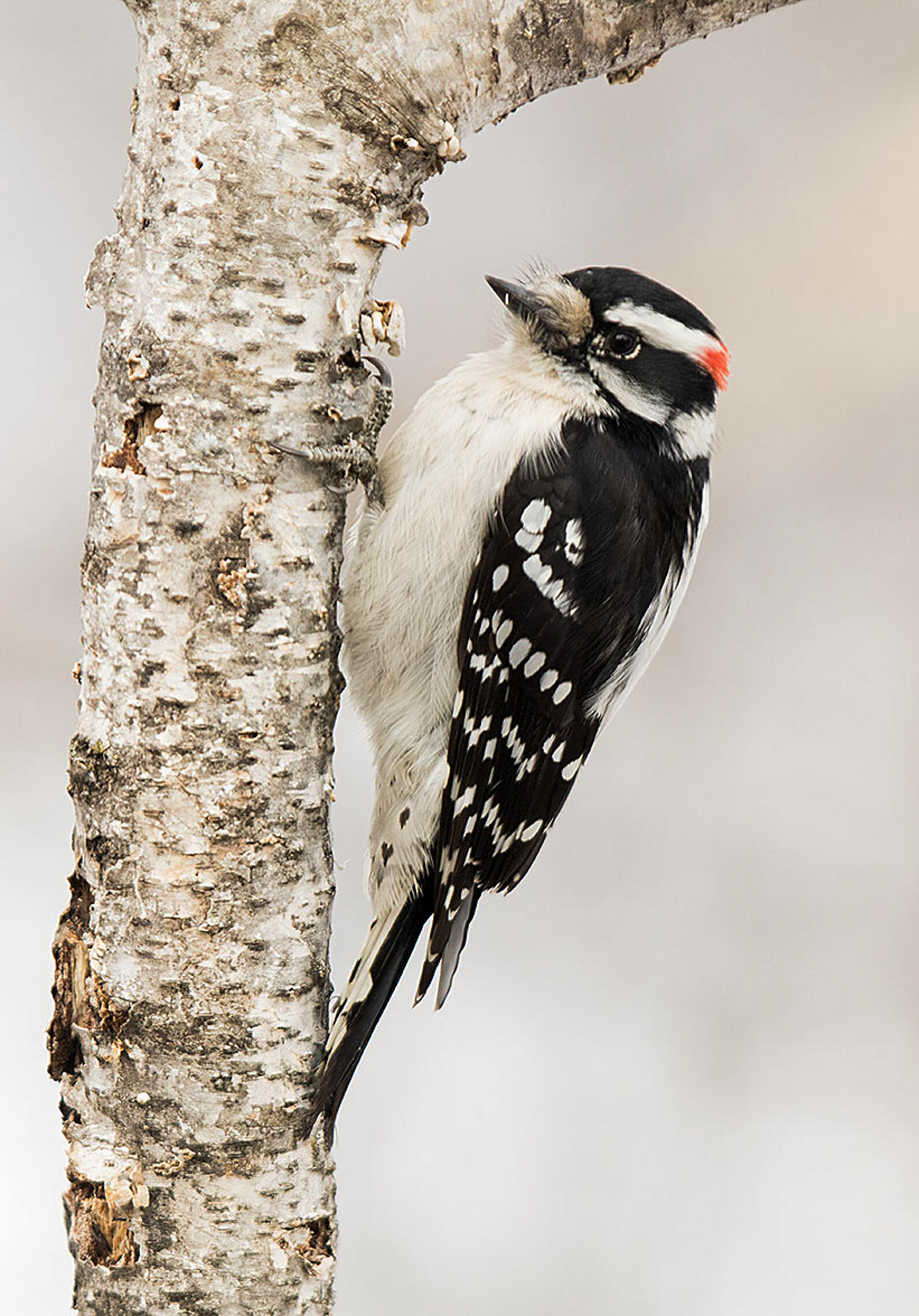
Hairy Woodpecker
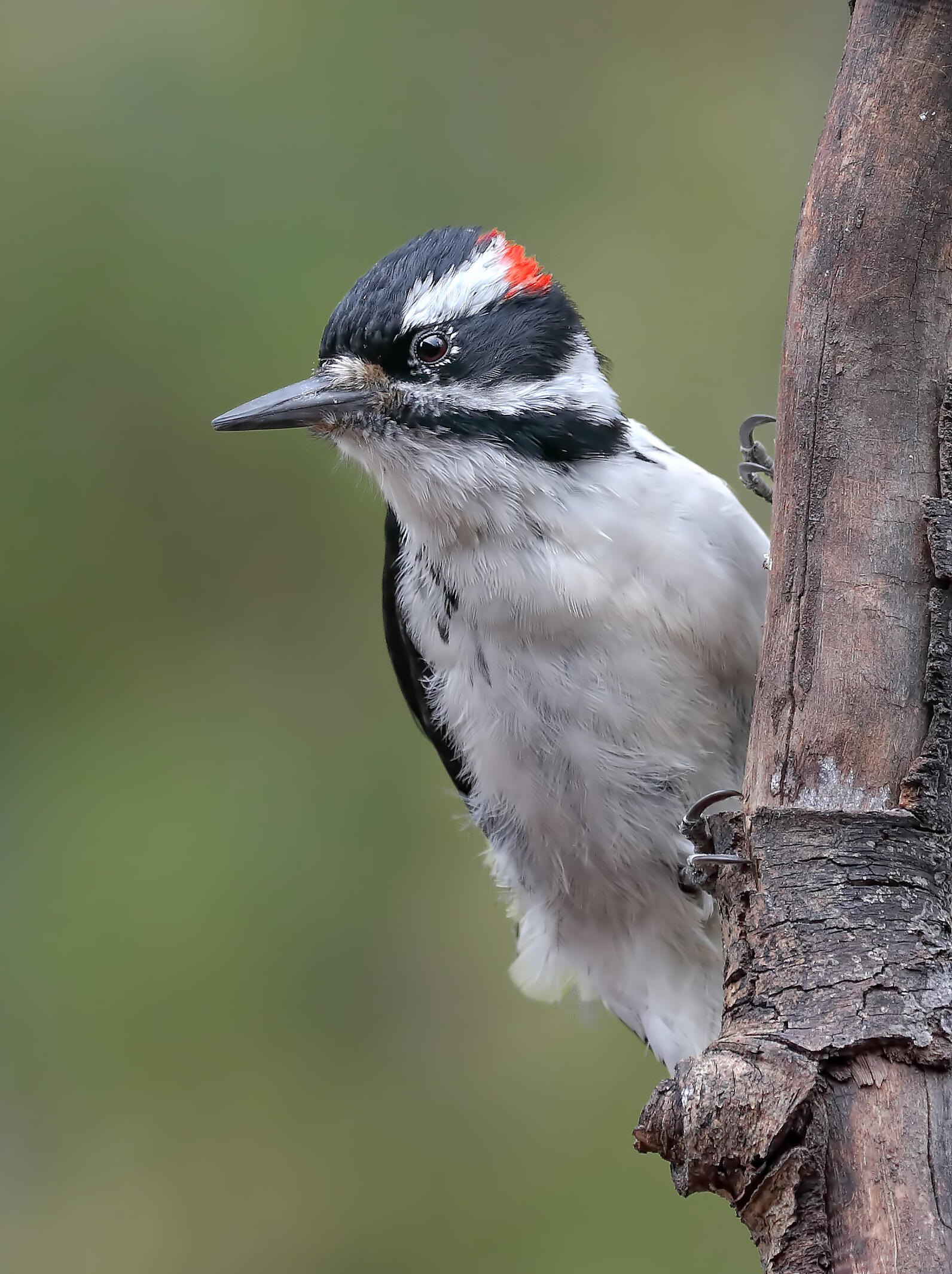
Red-bellied Woodpecker
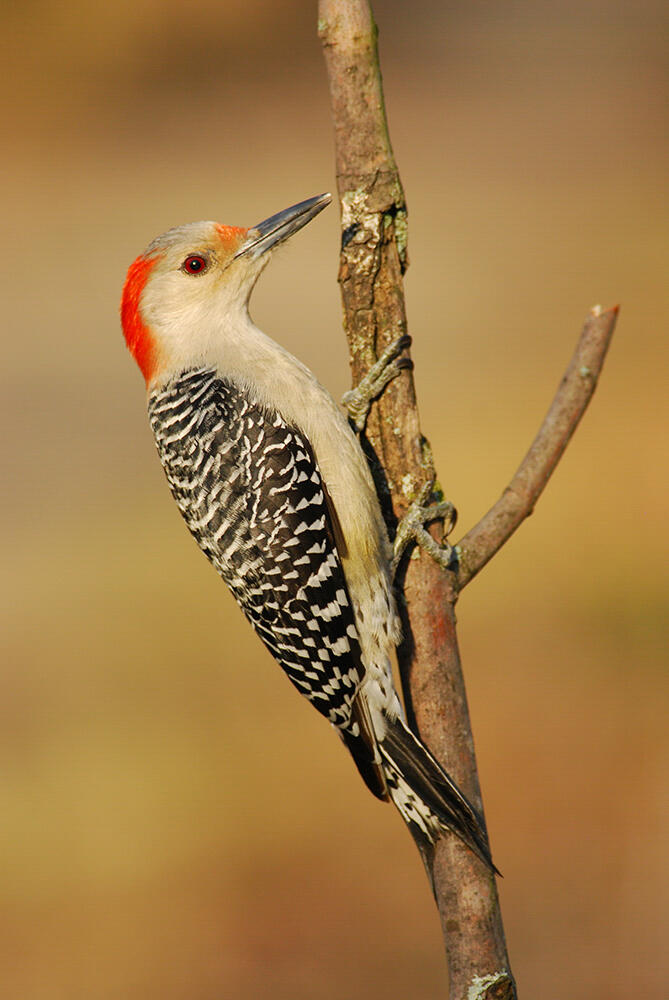
Additional Resources:
Bird Note podcast about the different drumming patterns of woodpeckers





